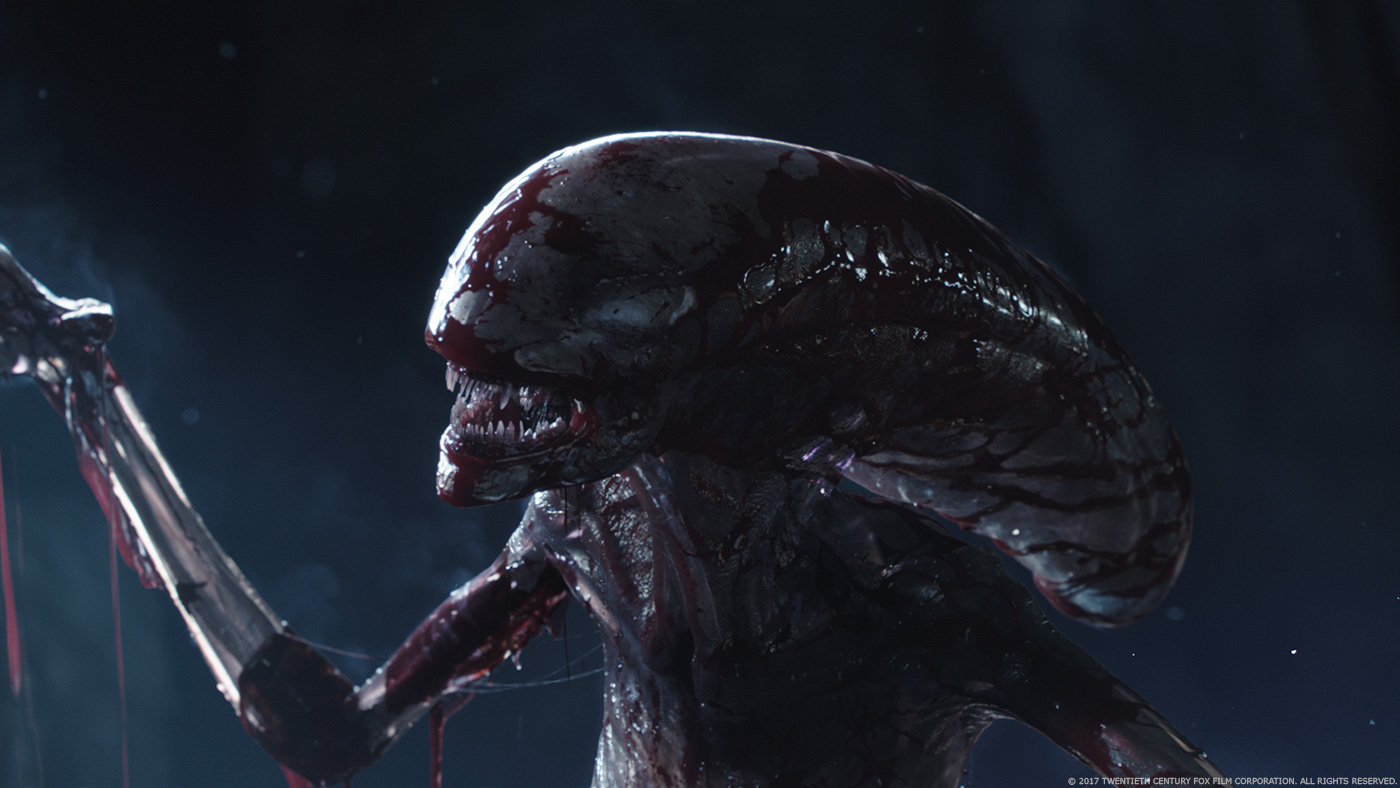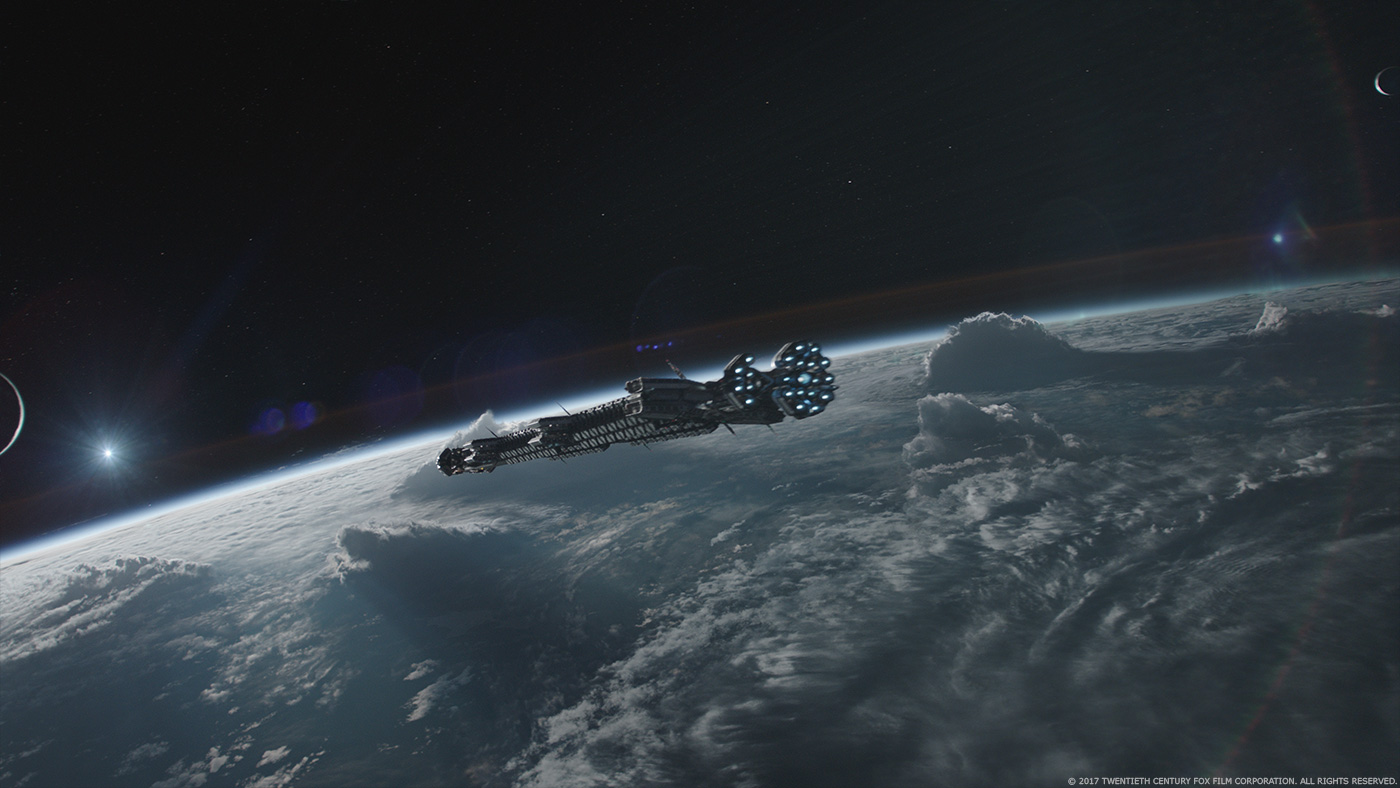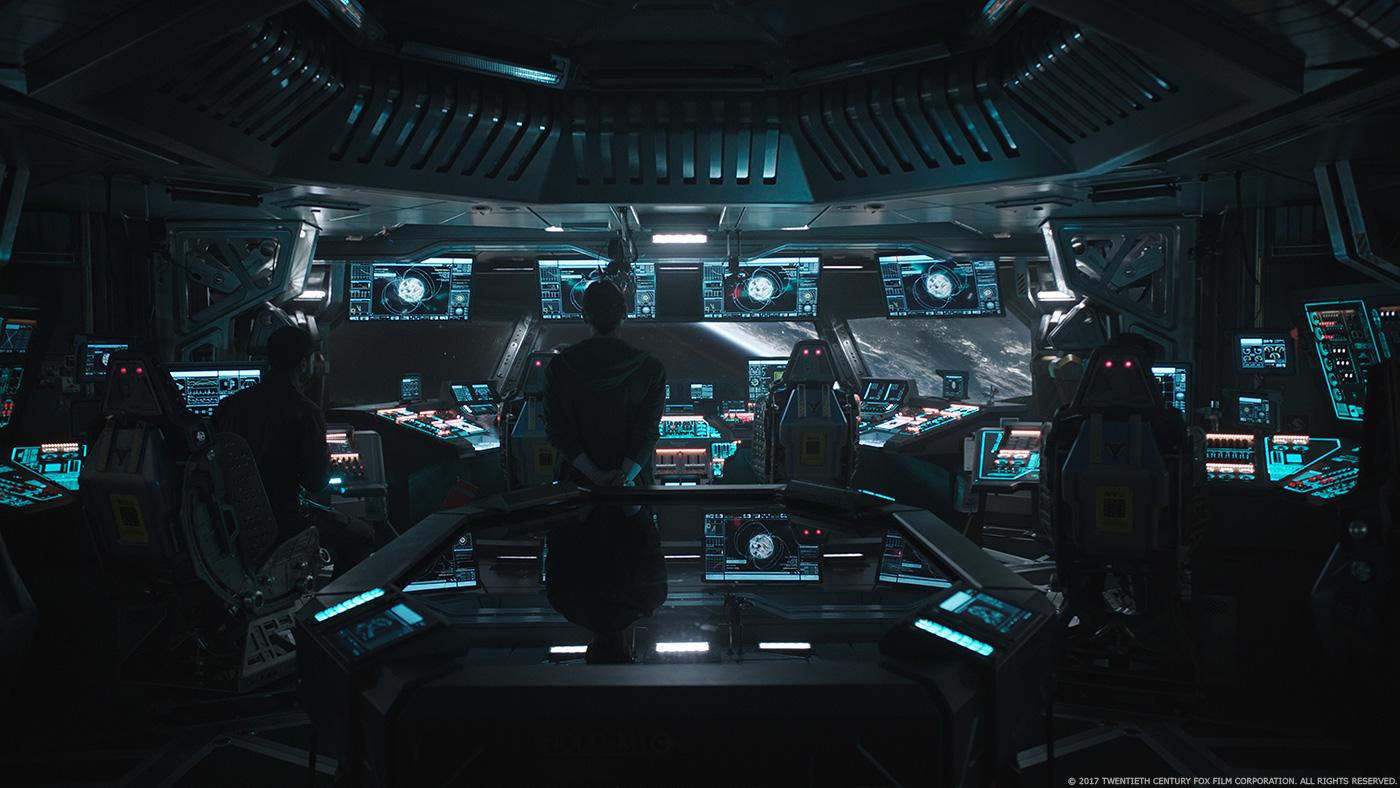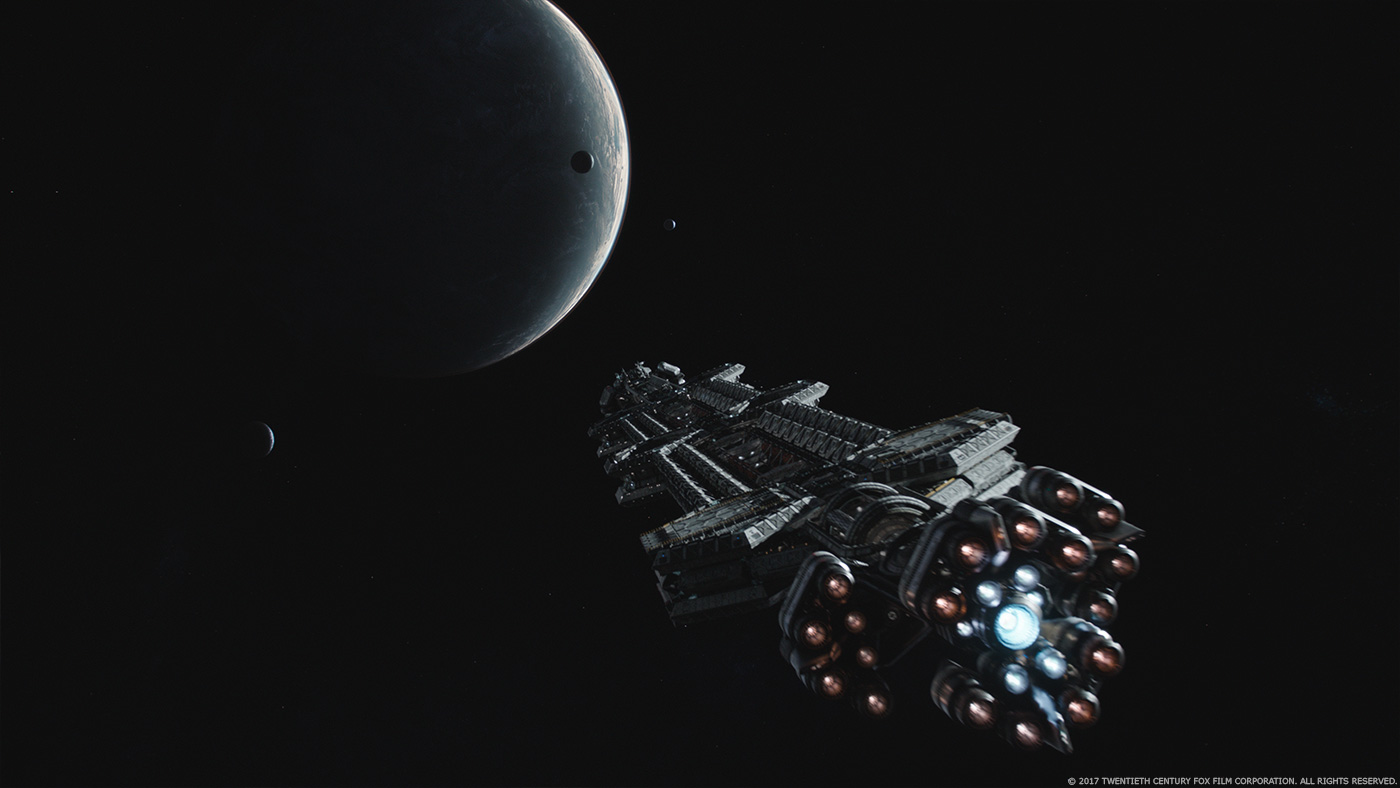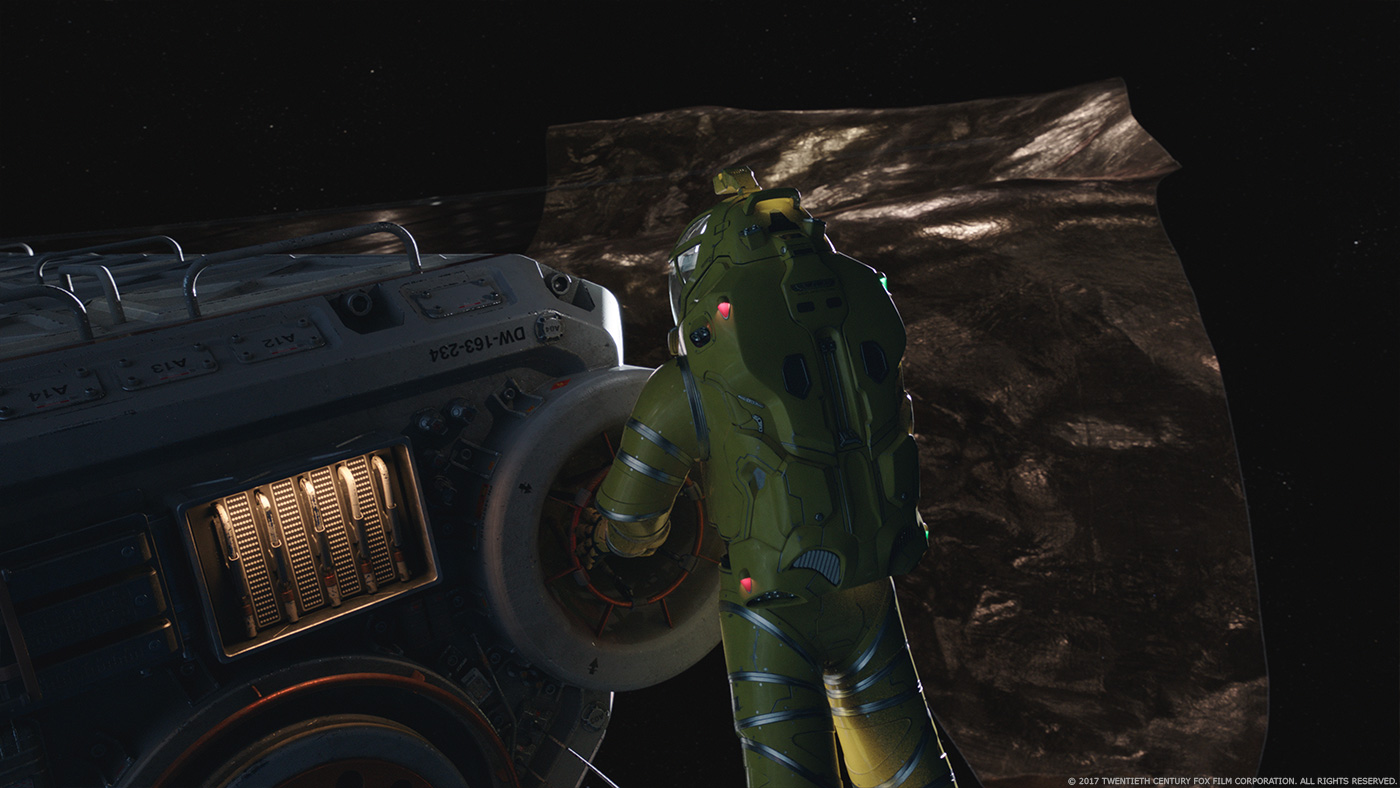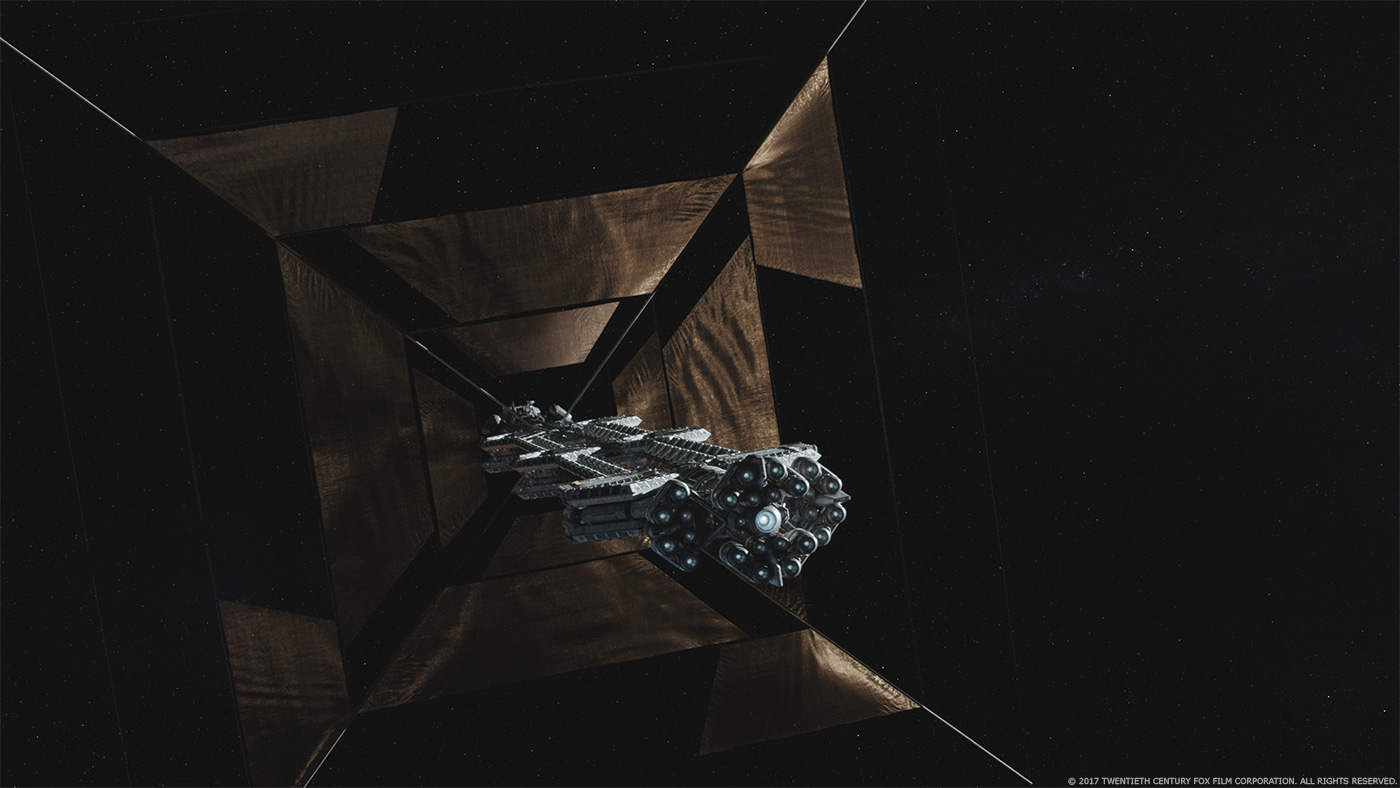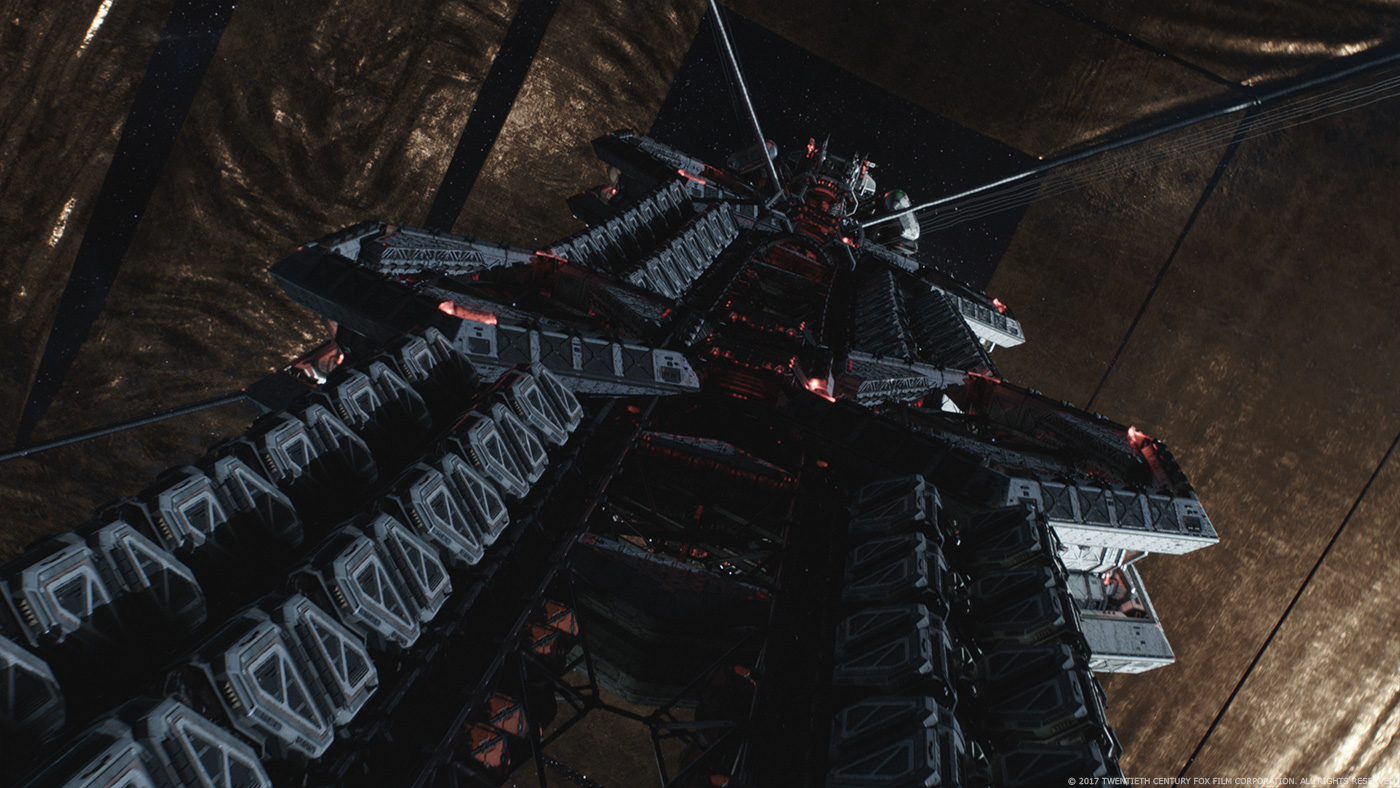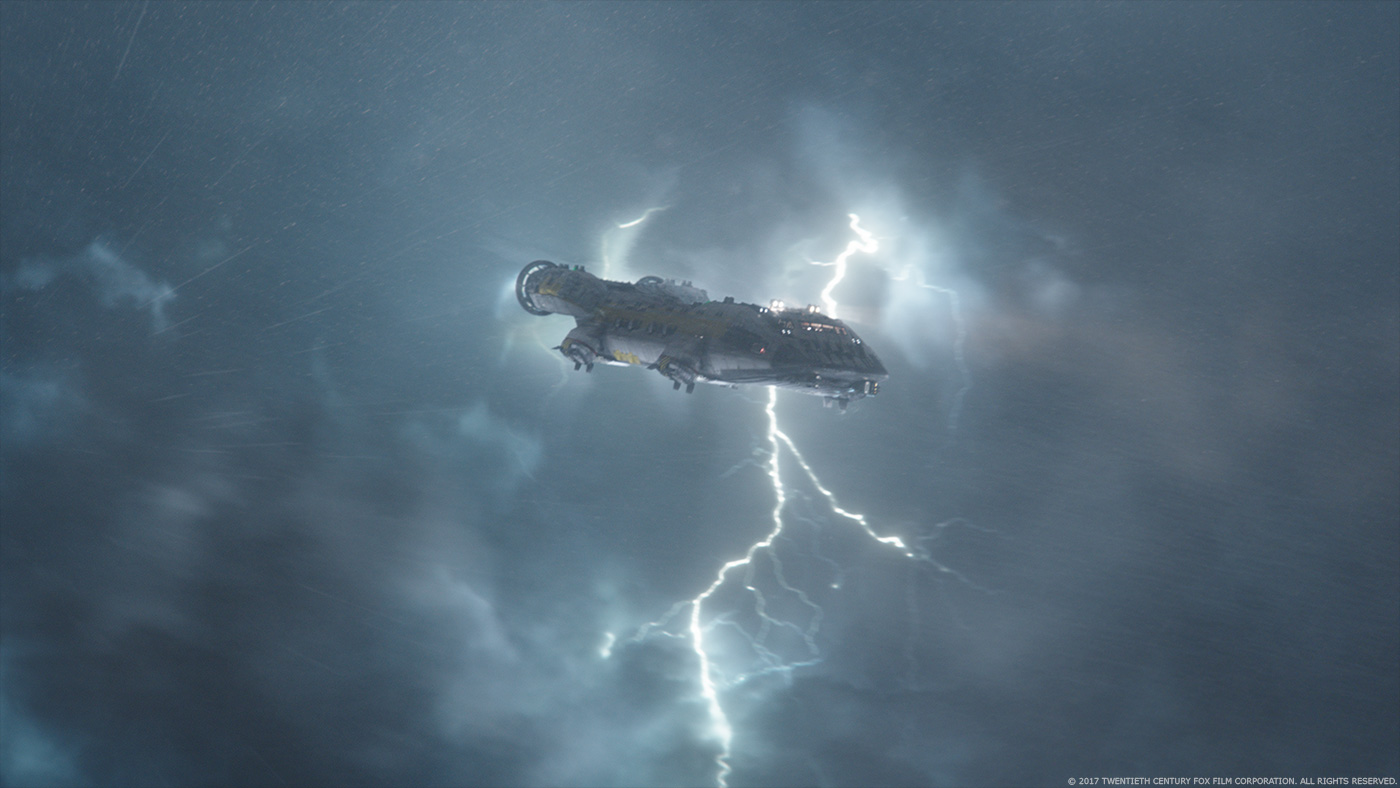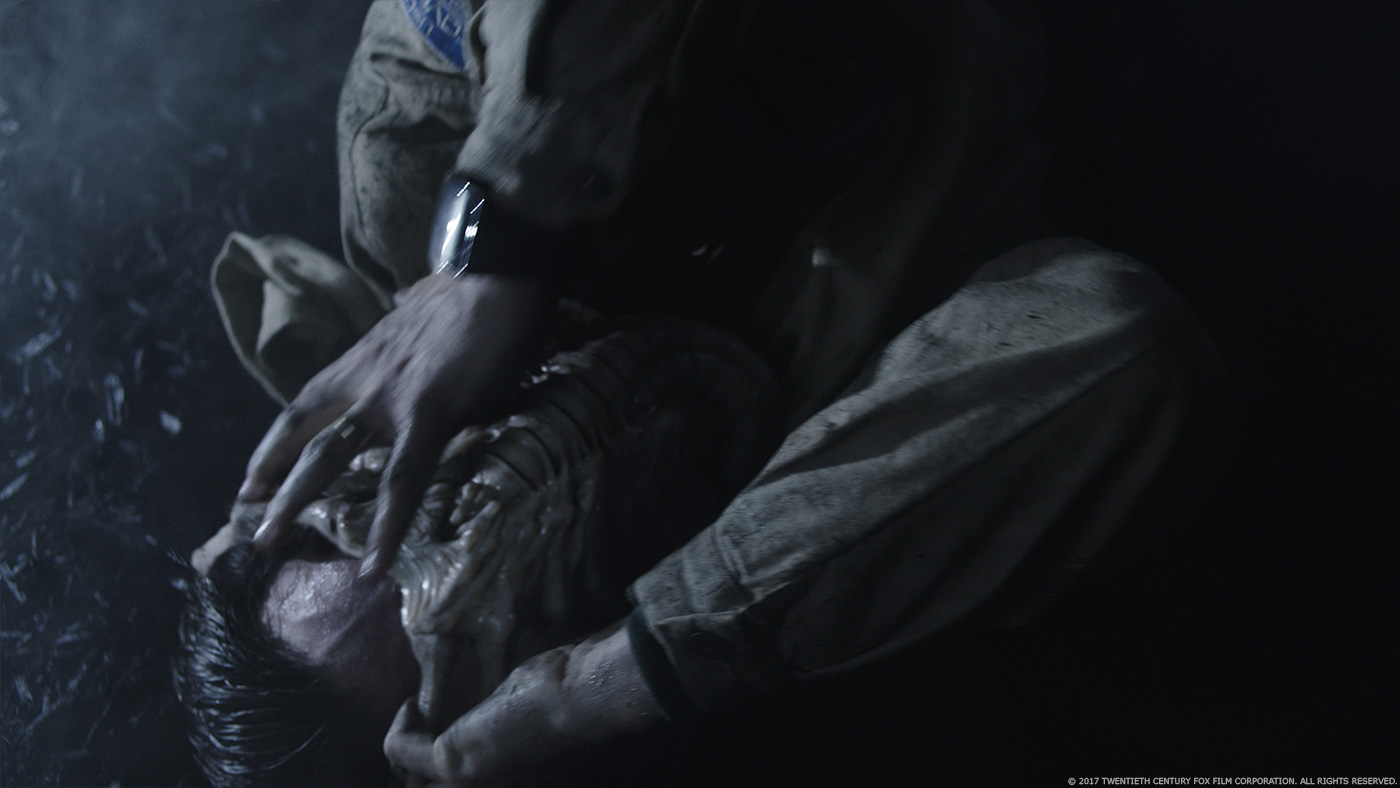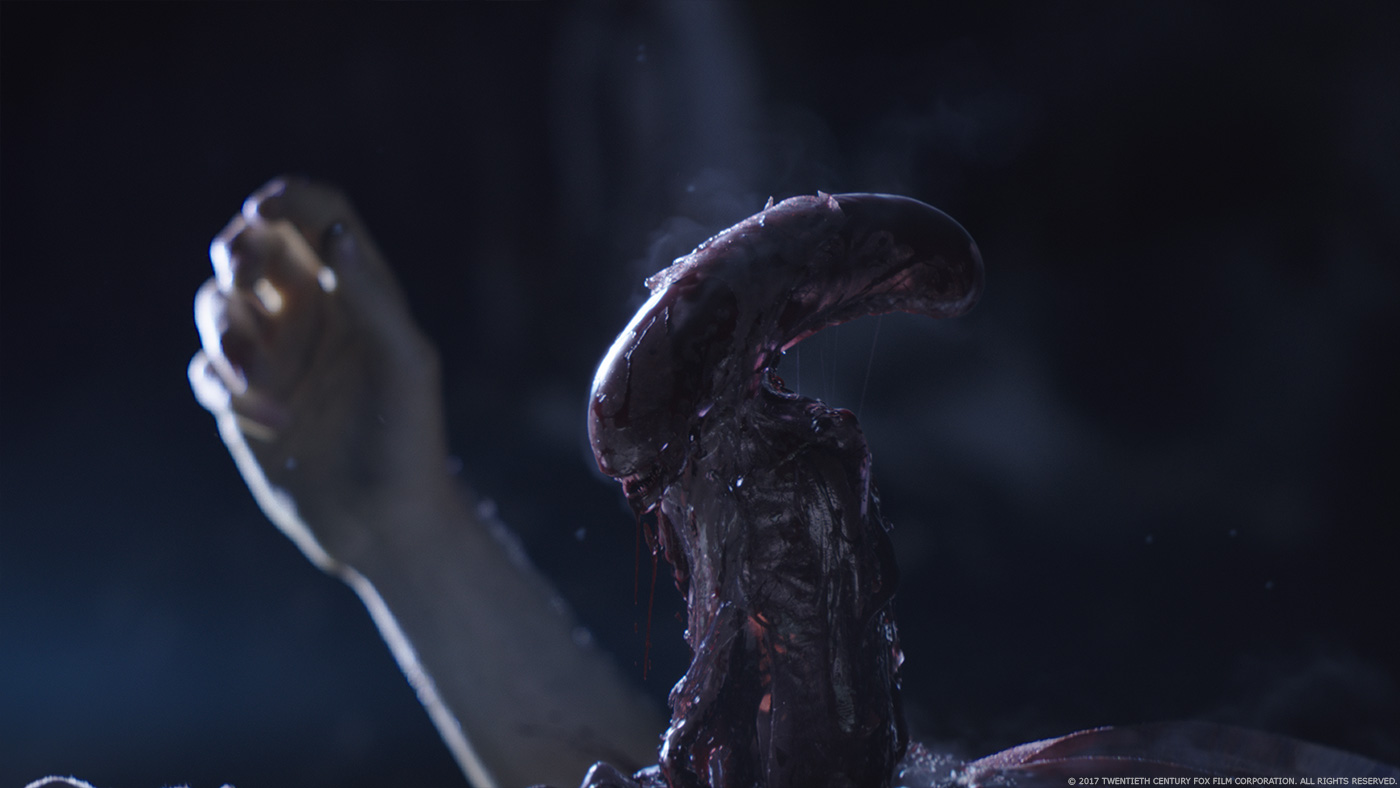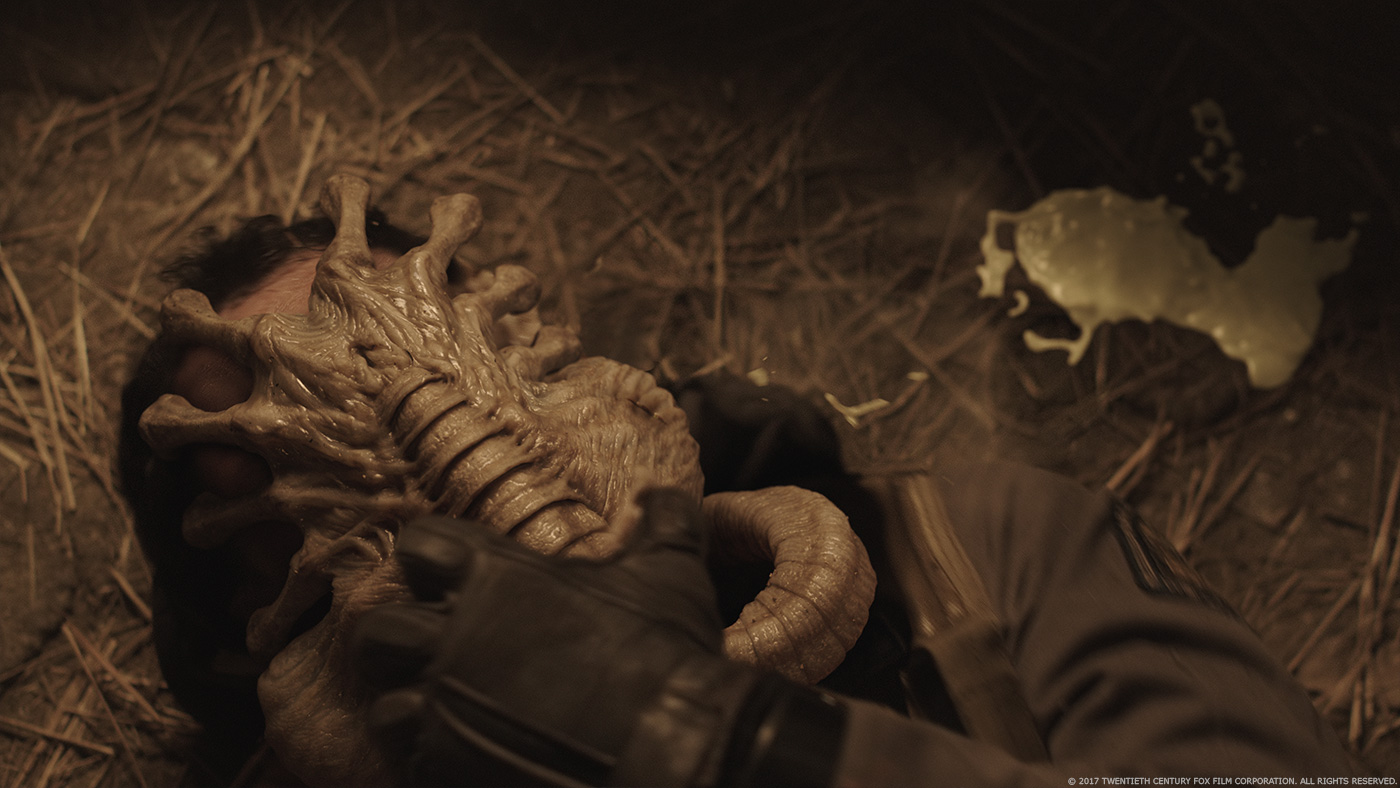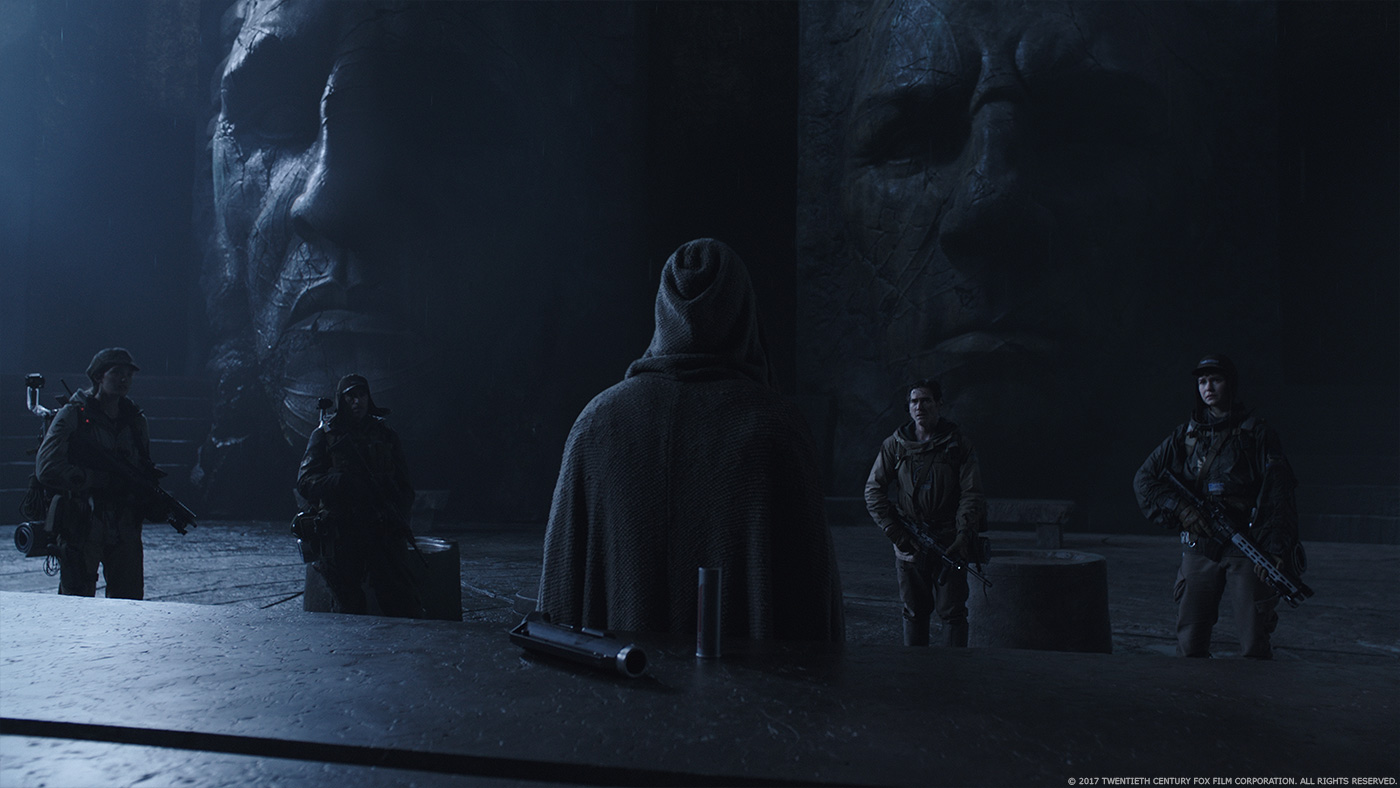Christian Kaestner began his career in visual effects in 2006 at The Orphanage and then joined the Framestore teams in 2007. He has worked on numerous projects such as AVATAR, GRAVITY, EDGE OF TOMORROW and PADDINGTON.
With more than 16 years experience at Framestore, Stuart Penn has worked on many projects such as THE GOLDEN COMPASS, AVATAR, GRAVITY and GUARDIANS OF THE GALAXY.
What is your background?
Stuart Penn (SP): I trained as a Physicist (PhD). I started in VFX as a modeller, worked in Lighting and Environments before becoming a CG Supervisor and VFX Supervisor.
Christian Kaestner (CK): My background is in Graphic Design. I used to work as an Art Director in Germany before getting my Masters of Fine Arts at the Academy of Art University in San Francisco. After graduating I started my VFX career at The Orphanage in California before starting with Framestore in 2007. I worked as a compositor, compositing supervisor and most recently I have taken on the Head of 2D for our Montreal office as well as working as VFX Supervisor.
How was the collaboration with director Ridley Scott and VFX Supervisor Charley Henley?
SP: We mostly communicated with Ridley through Charley. Charley was great to work with and understood what was important about each shot.
CK: Charley Henley was the eyes and ears for us when Ridley reviewed our work. Charley had a feel for what Ridley wanted for his shots. He was great in guiding us whilst giving us enough creative freedom to allow for a collaborative project. He reviewed the Montreal work mostly in Framestore London office, but also came out to visit us in Montreal a few times. It was great working with Charley and the project visuals are the result of great creative collaboration.
What was your feeling to be part of the Alien universe?
SP: It’s been a fantastic opportunity to be part of the Alien universe, especially with Ridley directing. A dream project. Most of our artists were huge fans; they were queuing at the door to work on it.
CK: I learned about the project more or less on the side during a conversation with our Managing Director in Montreal, Lucy Killick, while I was still working on KING ARTHUR. It came up in a side conversation and Lucy asked me how I would feel if ALIEN: COVENANT was going to be my next project. At that point my head must have been so packed with the KING ARTHUR delivery that my initial reaction was, sure, when does it start (aka can I take some holiday before it gets going.) It wasn’t until later that the magnitude of the project set in. ALIEN: COVENANT – A Ridley Scott movie. The same director who did ALIEN, probably the first real R rated movie I had seen. On top of that, it was a prequel to the original. What more could one wish for? It didn’t really matter what type of work we would be doing, it was an opportunity of working on a classic franchise that had be touched by so many of the great filmmakers.
What are the sequences made by Framestore?
SP: In London we worked on the Facehugger shots, and most of the Hall of Heads extensions. We also worked on the Walter / David fight face replacements.
CK: In Montreal we covered Space, including the Covenant Spaceship, the energy sails, and space environment, the fourth planet, as seen from space, including arrival at the planet, the ionic storm and establishing shots for the planet and Covenant. We also worked on the Chestburster.
How did you split the work amongst you and inside the Framestore offices?
SP: We mostly had separate assets and sequences, though in the Walter/David fight we shared the set extensions and face replacements between the London and Montreal sites – the assets for this were developed in London. Framestore is set up so that it easy for us to share sequences and setups.
Framestore have created many spaceships in his history. How does that help you for the Covenant?
CK: Every project has a “new” aspect to it – no show is alike and even if we have worked on certain things before, you want to do it better the next time around. There were several aspects of ALIEN: COVENANT that needed our attention and re-thinking. We have obviously worked on the creation of spaceships before, but the Covenant came with its own challenge; it was about 1,000 meters long and we needed something that would hold up in close-ups as well as wide shots, without challenging our render times too much.
Can you explain in detail about the creation of the Covenant?
CK: We were given quite a specific brief by the client about the Covenant and Ridley had been working with concept artist Steve Burg, who designed and concepted that ship with him. We received blueprints, 3D models and on set references from partial practical models that were built for filming. Anyone who has ever worked with Ridley Scott knows how much detail he likes to put into his practical set. All of this was obviously great reference for us to build and get the spaceship onto the big screen.
From day one, we decided to use our in-house instancing tool that I had personally used already on GEOSTORM and KING ARTHUR. It seemed to be the most suitable approach. One can think of it as big building set of pre-modelled objects that can be put together without adding more geometry. At this scale, the ship was going to have lot’s of repeating objects and modules, and whilst in our world they would essentially be the same geometry, we had just enough influence to alter each piece’s texture and angle to not have a perfectly straight CG model with lack of character and reality.
The Covenant can develop huge sails. Can you explain in detail about them?
CK: The main challenge for the sails was the scale. We needed to be able to make a believable solar sail with the dimensions of 800 x 800 meters and still read as very thin metallic foil. We didn’t want it to look plasticy or cloth like, it was always going to be a fine balance of achieving the right look. Ridley also wanted the sails to always be moving slightly so one could see the material quality of it and highlight twinkling. This meant we needed to come up with various simulation settings for different viewing distances, as there didn’t seem to be one setting that would work for all our scenarios.
I think the sails turned out really well in the end – it wasn’t as straightforward as one would hope and we ended up with more “one off” scenarios and models / simulations than we wanted, but I think the managed to create some spectacular shots with the sails for the movie.
Can you explain in detail about the huge storm creation?
CK: Simply put the brief was to create a storm that could potentially cover the entire planet. A little less fantasy maybe than PROMETHEUS, but different enough from planet earth that the audience couldn’t possibly mistake it for something that could be on earth. We used the hybrid approach of CG / FX clouds and Matte Painting. As story was a big part of our shots, we wanted to ensure that we have enough flexibility, yet continuity in our work that we didn’t end up with a finished painting that didn’t suite the place in the movie. We laid out all our Ionic storm shots with 3D clouds to establish composition and lighting direction and then with an established lighting pass painted on top of it to bring out all the small details of reality.
Can you tell us more about the planet and the arrival on it?
CK: There were several challenges with this sequence. Firstly, the different atmospheric layout of the planet that the Covenant is orbiting. Unlike planet earth our planet had a more complex layered atmosphere with a different scale of clouds. It was multitude of cloud layers that just wouldn’t exist on earth.
Secondly, creating something that the audience could understand as a habitable environment but yet other worldly enough to not be Earth without creating a full on fantasy look to it.
Lastly, there is a big story point to the storm, meaning we always needed to have the story point in the back of our minds when we were designing and laying out the environment.
How did you work with the art department for the Facehugger and the Chestburster?
SP: With the Facehugger, we photoscanned the puppet used on set and took over from there.
CK: It was the classic ALIEN Chestburster, yet its design was drastically different, more like a Xenomorph, but Ridley wanted the audience to believe it was the “same” Chestburster as from the original ALIEN – at least for the first few shots. Based on the detailed design from the special effects maquette, we put a lot of love and care into all the interior and exterior details as well as sitting it into the live action photography with lots of care.
Can you explain in detail about the creation of these iconic creatures?
SP: For the Facehugger, we had the scanned puppet and re-topologized it, and then we designed an anatomy (skeleton, muscles and tendons) that would inform how we would rig it. Adjustments were made to the model to have ensure it worked with the anatomy – especially around the tendons. We then sculpted additional detail in Zbrush. Texturing was closely based on the puppet.
CK: Everyone on the show wanted to work on the Chestburster. It carries great magnitude, and is synonymous with the names Alien and Ridley Scott. The approach was similar to the Facehugger, we scanned the practical maquette and then took it into ZBrush for extra detail. Translucent skin was modelled and textured to reveal intricate layers of muscle, bone and organs.
How did you manage their rigging and animation?
SP: With the Facehugger we started with the anatomy – the muscle simulation in the rig drove the deformation with skin dynamics on top. The tail was rigged based on a snake design. Before the shoot we did some animation tests to explore how the Facehugger might move. We looked at how spiders and snakes moved – to use a combination scuttling and using the tail to push itself along. Ridley wanted something very chaotic and instinctual. In a lot of the shots the Facehugger is wrapped tightly around a victim’s head. This required very tight body tracks.
CK: A complex animation rig allowed the limbs to bend backwards and bones to detach on the Chestburster, allowing the animators to twist and deform the anatomy into inhuman poses. A combination of fluid, muscle and cloth simulations added multiple layers of gruesome detail to the final animation.
These creatures have a specific translucent skin. How does that affect your lighting work?
SP: For the Facehugger, the anatomy was important for the rendering too; we used sub surface scatter through the skin and into the muscle geometry. It was important to feel the variation thickness of the skin, especially when it was backlit.
CK: it was evident from the plate photography that Ridley wanted to play with the translucency of the Chestburster. All shots were heavily backlit to play up the see through aspect of the creature. The biggest challenge for this wasn’t so much lighting the Chestburster as we had to match the live action photography, but it forced us to pay particular attention to the internals of the creature. Which in turn meant we had a particular rendering challenge at hand, we needed the shots to feel organic and malleable and not like a simple transparent creature.
How was simulated their presence on-set for the actors and the crew?
SP: There was a Facehugger puppet on set for interaction. It could be wrapped around actors faces. In some shots we painted out the puppet and others we used a clean plate that had a similar action. It was very useful for lighting reference and gave the editor something to cut with while we were developing the CG Facehugger. There was also a puppet one wheels that could be moved through shots for lighting reference.
CK: Same for the Chestburster.
Was there a shot or a sequence that prevented you from sleep?
CK: I want to say I have done this long enough to not lose sleep over it, but in reality one never stops caring. The whole project was on a schedule that didn’t allow for many mistakes, so getting it right was crucial. For me personally, getting the Chestburster sequence right was a big responsibility even though there aren’t that many shots featuring the Chestburster. Everyone on the team was keen to do justice to such an iconic creature.
What is your best memory on this show?
SP: I was lucky enough to spend a week on the shoot in Sydney. Visiting the fantastic sets was the opportunity of a lifetime.
CK: It must have been when Charley Henley called me up to say that he wanted make sure that we knew Ridley was really happy with our work on the Chestburster. He was aware that written notes sometimes don’t do justice to how much everyone appreciated the work that we had done.
How long have you worked on this show?
SP: About 9 months.
CK: About 8 months.
What is your VFX shots count?
London: 80
Montreal: 215
What is your next project?
CK: I’m currently filming MARY POPPINS RETURNS for Disney.
SP: I have to keep that one secret for now!
What are the four movies that gave you the passion for cinema?
SP: BLADE RUNNER, DUNE, THE THING, LEON.
CK: THE MATRIX, THE NEVERENDING STORY, THE USUAL SUSPECTS, FIGHT CLUB.
A big thanks for your time.
// WANT TO KNOW MORE?
Framestore: Dedicated page about ALIEN: COVENANT on Framestore website.
© Vincent Frei – The Art of VFX – 2017


